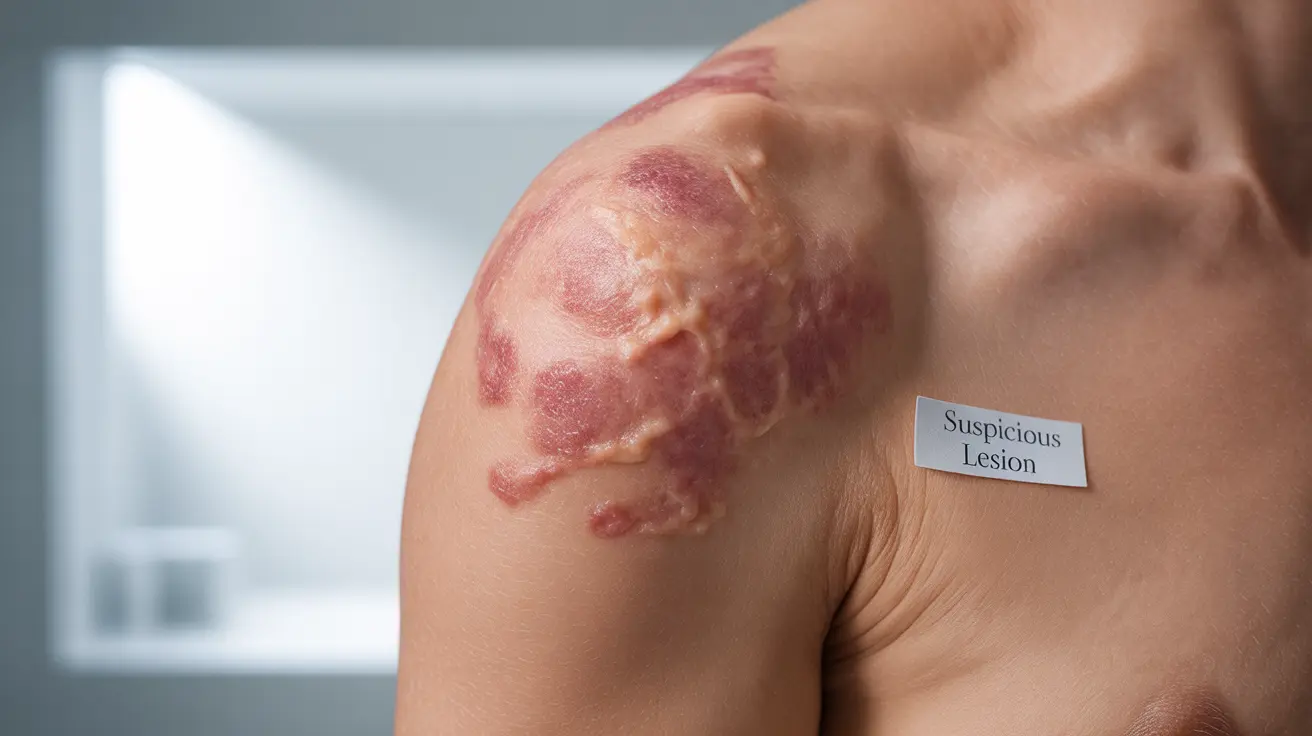Understanding the difference between a harmless skin rash and one that might indicate skin cancer is crucial for early detection and treatment. While many skin conditions are benign, certain persistent or unusual rashes could be warning signs of various types of skin cancer, making it essential to know what to look for and when to consult a healthcare provider.
This comprehensive guide will help you understand the characteristics of cancerous skin rashes, how to distinguish them from common skin conditions, and the importance of regular skin checks for maintaining your health.
Key Characteristics of Cancerous Skin Rashes
Cancerous skin rashes often present differently from typical skin conditions. Look for these warning signs:
- Asymmetrical patches or lesions
- Irregular borders
- Varying colors within the same spot
- Diameter larger than 6 millimeters
- Evolution or changes in size, shape, or color
Unlike common rashes that may come and go, cancerous lesions typically persist and may worsen over time. They might also exhibit unique characteristics such as pearly or waxy appearances, or areas that appear different from surrounding skin.
Distinguishing Cancerous from Non-Cancerous Rashes
Several key factors can help differentiate between cancerous and non-cancerous skin conditions:
Duration and Response to Treatment
Most benign rashes respond to appropriate treatment within a few weeks. Cancerous lesions typically don't improve with standard rash treatments and may continue to develop new symptoms.
Texture and Appearance
While conditions like eczema or psoriasis usually present with scaling, redness, and defined patches, cancerous rashes might show unusual features such as:
- Raised borders with central depression
- Bleeding without injury
- Persistent crusting or scabbing
- Non-healing sores
- Unexplained color changes
High-Risk Areas and Self-Examination
Certain body areas are more susceptible to developing skin cancer:
- Face and neck
- Ears
- Shoulders and upper back
- Arms and hands
- Legs (especially in women)
- Scalp (particularly in men)
Regular self-examination of these areas is crucial for early detection. Use mirrors to check hard-to-see areas and document any changes in existing skin marks.
When to Seek Medical Attention
Consider scheduling an appointment with a dermatologist if you notice:
- A rash that persists beyond 4-6 weeks
- Unexplained bleeding or oozing
- Rapid changes in size, shape, or color
- New symptoms in existing moles or skin patches
- Intense itching that doesn't respond to treatment
Frequently Asked Questions
What are the common signs that a skin rash could be a type of skin cancer? Common signs include asymmetry, irregular borders, varying colors, diameter greater than 6mm, and evolution of existing spots. Unlike typical rashes, cancerous lesions often don't heal and may bleed easily.
How can you tell the difference between a cancerous skin rash and a benign rash like eczema or psoriasis? Cancerous rashes typically don't respond to standard treatments, persist longer than normal rashes, and may have unique characteristics like pearly borders or central ulceration. Benign conditions usually improve with appropriate treatment and have more predictable patterns.
When should I see a doctor if a rash does not improve with standard treatments? Seek medical attention if a rash persists beyond 4-6 weeks, shows unusual changes, bleeds easily, or doesn't respond to over-the-counter treatments. Any new symptoms in existing skin marks should also prompt a medical evaluation.
Can skin cancer cause persistent itching, bleeding, or crusting on the skin? Yes, skin cancer can cause all these symptoms. Persistent itching, spontaneous bleeding, and crusting that doesn't heal are important warning signs that should be evaluated by a healthcare provider.
What areas of the body are most at risk for skin cancer rashes and how can I check for early warning signs? The face, neck, ears, shoulders, arms, and legs are common areas for skin cancer development. Perform regular self-examinations using the ABCDE method (Asymmetry, Border irregularity, Color variation, Diameter, Evolution) and use mirrors or photography to track changes in hard-to-see areas.




